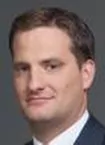The question of whether a sequence of exercises, such as yoga poses or dance moves, can be copyrighted has occupied the attention of international courts, scholars and copyright offices for some time. In late 2015, the issue received some media attention when yoga guru Bikram Choudhur tried to gain a US copyright in a signature sequence of yoga poses but failed before the Court of Appeals for the Ninth Curcuit. Despite the effort of international copyright conventions, the question of copyrightability essentially remains a matter of national law.
On 2 February 2007, the Higher Regional Court of Cologne (Case 6 U 117/06), Germany, ruled that an acrobatic dance performance could, in principle, be considered a "work of dance art" subject to copyright protection under Sec. 2 para. 1 No. 3 of the German Copyright Act. The required threshold of originality could, however, only be achieved, if the performance went beyond a sequence of physical movements and conveyed a particular artistic message. Whether this ruling can, by analogy, be extended to yoga and exercise routines is not clear. Simple routines are, however, not likely to constitute "personal intellectual creations" within the meaning of Sec. 2 para. 2 of the German Copyright Act.
An Integrated, Coherent, and Expressive Whole
In a further example, in a Statement of Policy from 18 June 2012, the US Copyright Office took the position that "a selection, coordination, or arrangement of functional physical movements such as sports movements, exercises, and other ordinary motor activities" did not represent the type of authorship intended to be protected under the US Copyright Act as choreographic works. However, a "composition and arrangement of a related series of dance movements and patterns organized into an integrated, coherent, and expressive whole" could rise to the level of original choreographic authorship.
A Look Ahead
Even if simple yoga or exercise routines will likely not meet the minimum threshold of originality in most jurisdictions, a film or description of such routine may be copyrightable, as may a compilation of photographs of the routine's individual movements. Additionally, exercise brands can make a profit from teaching their routines to others (train the trainer") or from licensing their brand to fitness centers so that people familiar with the brand's program know what to expect of the centers' workout sessions.
This article was originally published on AllAboutIP – Mayer Brown's blog on relevant developments in the fields of intellectual property and unfair competition law. For intellectual property-themed videos, Mayer Brown has launched a dedicated channel available here.
Visit us at mayerbrown.com
Mayer Brown is a global legal services provider comprising legal practices that are separate entities (the "Mayer Brown Practices"). The Mayer Brown Practices are: Mayer Brown LLP and Mayer Brown Europe – Brussels LLP, both limited liability partnerships established in Illinois USA; Mayer Brown International LLP, a limited liability partnership incorporated in England and Wales (authorized and regulated by the Solicitors Regulation Authority and registered in England and Wales number OC 303359); Mayer Brown, a SELAS established in France; Mayer Brown JSM, a Hong Kong partnership and its associated entities in Asia; and Tauil & Chequer Advogados, a Brazilian law partnership with which Mayer Brown is associated. "Mayer Brown" and the Mayer Brown logo are the trademarks of the Mayer Brown Practices in their respective jurisdictions.
© Copyright 2017. The Mayer Brown Practices. All rights reserved.
This Mayer Brown article provides information and comments on legal issues and developments of interest. The foregoing is not a comprehensive treatment of the subject matter covered and is not intended to provide legal advice. Readers should seek specific legal advice before taking any action with respect to the matters discussed herein.

